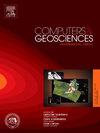Stratya2D:通过基于图像的2D水平整合增强运动学反剥离
IF 4.4
2区 地球科学
Q1 COMPUTER SCIENCE, INTERDISCIPLINARY APPLICATIONS
引用次数: 0
摘要
沉积盆地的研究对于理解地球的演化和地质历史是至关重要的。传统的盆地分析往往受到一维沉降分析的约束,限制了对地质过程的空间理解。本研究介绍了Stratya2D,这是一种基于python的工具,通过将1D分解和反剥离扩展到2D框架,从而扩展了传统的方法,从而可以进行详细的盆地分析。该工具从预解释的地震图像中提取层位注释,从而实现基于坐标的沉积表面重建。Stratya2D采用先进的图像处理技术,集成了地平线提取、深度归一化和蒙特卡罗模拟(MCS),以量化每个时间步的构造沉降和层演化的不确定性,为地球科学分析提供了突破。这种创新的方法为传统软件提供了一种更具成本效益的替代方案,并提高了预测的可靠性。通过与已有文献和具体案例研究的对比,验证了该工具的有效性,其中包括澳大利亚北部地区South Nicholson地区沿17GA-SN1地震线的NDI Carrara 1井的数据。该结果与先前公布的数据和PetroMod模拟结果密切一致,准确地复制了构造沉降曲线,并为南尼科尔森地区复杂的地质环境提供了更深入的了解。与PetroMod的对比分析证实了Stratya2D的鲁棒性,而MCS的加入则强调了不确定性量化在地下建模中的关键作用。Stratya2D为区域尺度的盆地建模提供了一个强大而通用的工具,有效地解决了各种地球科学挑战。本文章由计算机程序翻译,如有差异,请以英文原文为准。
Stratya2D: Enhancing kinematic backstripping through image-based 2D horizon integration
The study of sedimentary basins is crucial for understanding Earth’s evolution and geological history. Traditional basin analysis, often constrained by 1D subsidence analysis, limits the spatial understanding of geological processes. This study introduces Stratya2D, a Python-based tool that extends traditional methodologies by extending 1D decompaction and backstripping to a 2D framework allowing for detailed basin analysis. The tool extracts horizon annotations from pre-interpreted seismic images, enabling coordinate-based reconstruction of depositional surfaces. Using advanced image processing techniques, Stratya2D integrates horizon extraction, depth normalisation, and Monte Carlo Simulation (MCS) to quantify uncertainties in tectonic subsidence and layer evolution at each time step, offering a breakthrough in geoscientific analysis. This innovative approach offers a more cost-effective alternative to traditional software and improves prediction reliability. The tool’s effectiveness was validated through comparisons with established literature and specific case studies, including data from the NDI Carrara 1 well in the South Nicholson region, Northern Territory, Australia, along the 17GA-SN1 seismic line. The results closely align with previously published data and PetroMod simulations, accurately replicating the tectonic subsidence curve and offering extended insights into the complex geological context of the South Nicholson Region. Comparative analysis with PetroMod confirms the robustness of Stratya2D, while the inclusion of MCS highlights the critical role of uncertainty quantification in subsurface modelling. Stratya2D offers a robust and versatile tool for regional-scale basin modelling, effectively addressing diverse geoscientific challenges.
求助全文
通过发布文献求助,成功后即可免费获取论文全文。
去求助
来源期刊

Computers & Geosciences
地学-地球科学综合
CiteScore
9.30
自引率
6.80%
发文量
164
审稿时长
3.4 months
期刊介绍:
Computers & Geosciences publishes high impact, original research at the interface between Computer Sciences and Geosciences. Publications should apply modern computer science paradigms, whether computational or informatics-based, to address problems in the geosciences.
 求助内容:
求助内容: 应助结果提醒方式:
应助结果提醒方式:


